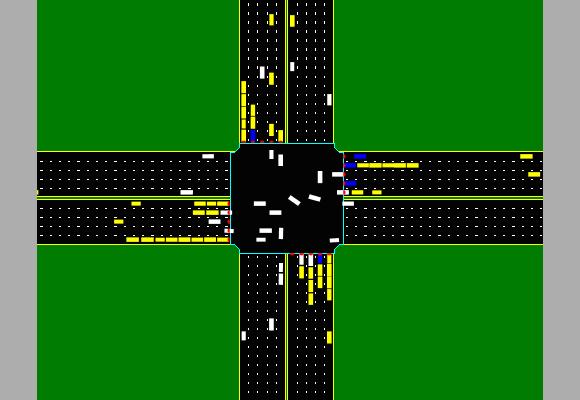KUT | Andrew Uhler

A technology professor at the University of Texas has created an autonomous intersection management system that could pave the way for self-driven cars.
Computer science professor Peter Stone has been working on what he calls “intersections of the future” for about a decade.
“A Ph.D. student of mine, Kurt Dresner, had the idea,” Stone said. “He was late for a meeting with me because he was stuck at a red light that he thought was far too long. And he thought, ‘You know, once cars are autonomous we can do a lot better than that.’”
In 2007, Stone and a group of undergraduate students worked on UT’s submission to the Defense Department’s Urban Challenge competition. They created an autonomous car, called Marvin, with the help of local electronics company Austin Robot Technology.
Marvin can drive without human operation. He lives at UT’s Pickle Research Campus.
Stone says if Marvin and autonomous cars like him were to navigate U.S. roadways successfully, they’d need an intersection management system.
“Taking traffic data and turning that into knowledge about where the cars are, what routes are free, and then taking actions such as changing, in real time, the directionality of roads or lanes – it’s something that would be much more feasible with autonomous cars than with people,” Stone said. “It would be very confusing for a person if, all of a sudden, in the middle of the day, you said, ‘OK, this lane is going north-south instead of south-north.’”
Stone delivered his findings in Vancouver, British Columbia, over the weekend at the American Association for the Advancement of Science conference.
On his laptop, Stone shows a video showing how this traffic system works.
“What you see is a lot of cars, simulated cars, coming towards an intersection, and instead of having traffic signals that say go when it’s green and stop when it’s red, or stop signs that require them all to stop, instead the coordination is at a much finer granularity, so each car is calling ahead saying, ‘I would like to arrive at a particular time, and here’s the path I’d like to take: I’d like to go straight or I’d like to go left,’” he said.
The simulation is a sort of extremely organized chaos. The little cars resemble ants in a hive, speeding up and slowing down so gradually that you barely notice it. At every instance, the cars narrowly miss crashing into one another.
Stone says by taking the human element out of driving, traffic flows more efficiently. And with the drastic reduction in the amount of acceleration and deceleration, harmful emissions could be reduced.
“It’s actually going to be better environmentally,” he said. “It’s going to be better from a safety perspective, and the statistics are that people spend, on average, 48 hours of their year stuck in traffic, and that costs billions of dollars in lost productivity and fuel. This is going to play a big role in reducing that.”
Stone says he and his colleagues will continue to refine the “intersection of the future” concept — expanding from single intersections to networks of them all operating together.
He can’t predict when Texans will be passengers in our own cars. Some things are out of his control, including laws and regulations.
But starting March 1, he said, robot cars can be tested on Nevada’s roads. Hawaii, Florida and Oklahoma are reportedly ready to follow suit.
Stone says since the technology has already been established, it’s only a matter a time.



